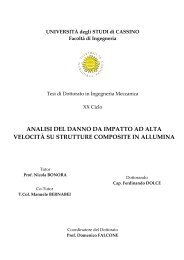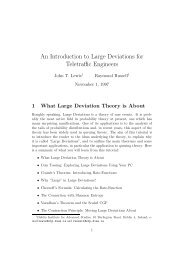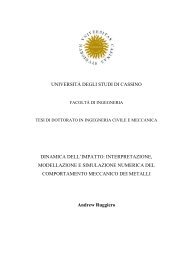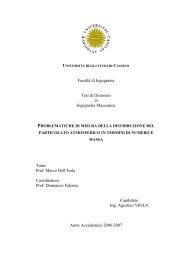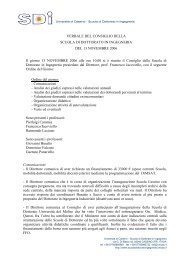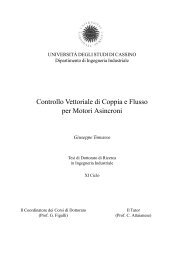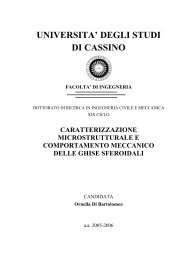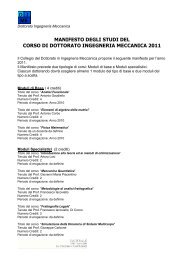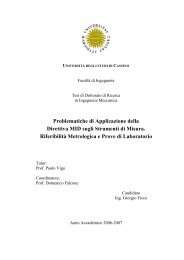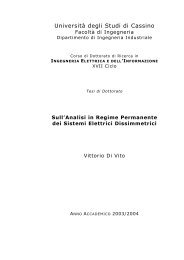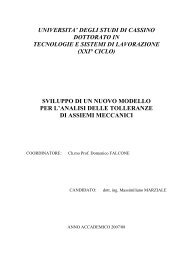Finite Strain Shape Memory Alloys Modeling - Scuola di Dottorato in ...
Finite Strain Shape Memory Alloys Modeling - Scuola di Dottorato in ...
Finite Strain Shape Memory Alloys Modeling - Scuola di Dottorato in ...
Create successful ePaper yourself
Turn your PDF publications into a flip-book with our unique Google optimized e-Paper software.
with R a material parameter def<strong>in</strong><strong>in</strong>g the ra<strong>di</strong>us of the elastic doma<strong>in</strong> and( tr )dev( T)= T− 1 T 1 is the deviator of the tensor T .3The quantity T is the thermodynamic associated variable to the symmetrictransformation rate tensor dt.Here, the derivative of the limit function f with respect to the dual variable def<strong>in</strong>esthe <strong>di</strong>rection of the <strong>in</strong>ternal variable <strong>in</strong>crement , while ζ is the plastic consistentparameter.The limit surface def<strong>in</strong>es the limit of the elastic doma<strong>in</strong>. Inside the surface, that iswhen f < 0 , the <strong>in</strong>ternal variables do not vary, so that the plastic multiplier ζ iszero. Along the surface, that is when f = 0 , there is a variation of the <strong>in</strong>ternalvariables and the plastic multiplier is <strong>di</strong>fferent from zero. Po<strong>in</strong>ts outside of the limityield are not admissible.The described cases are summarized <strong>in</strong>troduc<strong>in</strong>g the Kuhn-Tucker con<strong>di</strong>tions ζ ≥0 f ≤ 0 ζ f = 0(4.40)that complete the model. The fulfillment of these con<strong>di</strong>tions allows to evaluate theplastic multiplier and, as a consequence, the <strong>in</strong>ternal variables evolution.The so def<strong>in</strong>ed model can be classified as an associated model because the limitsurface govern<strong>in</strong>g the onset of the plastic deformations is assumed to be co<strong>in</strong>cidentwith the plastic potential def<strong>in</strong><strong>in</strong>g the plastic flow <strong>di</strong>rection.It is well-known from experimental evidences that shape-memory materials,expecially NiTi and CuZnAl alloys, exibith a tension-compression asymmetry <strong>in</strong>their phase transformation behavior which is not <strong>di</strong>splayed by the here chosen ‘vonMises’ criterion. However the framework of this model also allows <strong>di</strong>fferent phasetransition criteria which account for SMA tension-compression asymmetry.72



